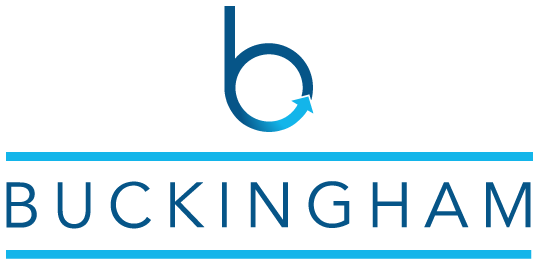By Dominic A. Frisina, and Hannah P. Mink
The Court’s reasoning in Amgen v. Sanofi upholds the Federal Circuit’s long-standing requirement to enable the full scope of a claimed invention. Since the Patent Act of 1790, patent law has required describing inventions with such clarity and specificity as to enable one skilled in the art to make and use the claimed invention. Moreover, the Court has consistently held that a patent fails to satisfy the enablement requirement if a person having ordinary skill must engage in undue experimentation to practice the claimed invention.[i] The Federal Circuit has gone a step further, requiring that patents enable the full scope of a claimed invention.[ii] Amgen is a ratification of this aspect of the Federal Circuit’s enablement jurisprudence. As the Court said in Amgen, “the more one claims, the more one must enable.”[iii] But, what exactly does “full scope” mean? For that we turn to Amgen.
Amgen and Sanofi are both pharmaceutical companies who each developed similar drugs for reducing the level of circulating low-density lipoprotein (LDL), the so-called “bad cholesterol” correlated to heart attacks and strokes.[iv] The active ingredients in both drugs are antibodies that bind to the PCSK9 protein, though the particular antibody in each drug differs. Amgen and Sanofi both hold numerous patents covering such antibodies, most of which describe and claim specific antibodies by their unique amino acid sequence.[v]
In an effort to exclude Sanofi from the lucrative cholesterol drug market, Amgen obtained two more patents in which it claimed the entire genus of antibodies that perform the cholesterol-lowering functions of binding to the PCSK9 protein, and blocking it from binding to LDL receptors.[vi] Amgen’s patents provided a very detailed description of twenty-six antibodies specifically identified by amino acid sequences in a written description covering 61 pages and containing 41 working examples, detailing the results of numerous studies, including 151 pages of figures containing an enormous amount of experimental data and even two crystallographic solutions. In short, Amgen’s genus patents, and their teachings, were extensive and extraordinary. Amgen’s patent counsel surely understood that extraordinary teaching would be necessary in view of the extraordinary scope of their claims. Unfortunately for Amgen, the overreach of its claims was more extraordinary than the teachings of its disclosure. Claim 1 is illustrative of Amgen’s overreach:
1. An isolated monoclonal antibody that binds to PCSK9, wherein the isolated monoclonal antibody binds an epitope on PCSK9 comprising at least one of residues 237 or 238 of SEQ ID NO: 3, and wherein the monoclonal antibody blocks binding of PCSK9 to LDLR.
Claiming any and all antibodies, in purely functional terms, that bind to PCSK9 and block it from binding to LDL receptors, as claim 1 does, is to claim an unknown number of antibodies, in a field of millions of candidates, most of which are expected to be non-functional.[vii] To Amgen’s credit, its patents provided two processes that would enable a skilled scientist to discover, potentially, all of the antibodies encompassed by its claims. Even so, as a practical matter, every single antibody would have to be made and tested in order to know that all the claimed antibodies had been identified. Though extraordinarily detailed and likely operable, Amgen’s methods amount to an inelegant, brute force, process for finding a needle in a haystack by examining each straw. The question for the Court was whether the enormous amount of work required to practice the full scope of the claims is “undue experimentation”, and its answer was a unanimous “yes”.
Amgen’s motivation for writing such patents is straightforward; it stood to gain by excluding its closest competitor. What may not be immediately obvious is why certiorari was granted in a case where the outcome seems intuitive. The Court’s November 4, 2022 docket entry indicates the Court’s intention to address the Federal Circuit’s long-standing rule requiring enablement of the “full scope” of a claimed invention.[viii] In its opinion, the Court adopts the Federal Circuit’s rule, but provides scant guidance on the meaning of “full scope”. To the extent that the Court provides guidance, it amounts to identifying opposite ends of a broad spectrum. At one end, we are reassured that “full scope” does not mean that “a specification always must describe with particularity how to make and use every single embodiment within a claimed class.”[ix] But at the other extreme we only know that 41 working examples do not enable claims encompassing up to 106 to 108 antibodies that the patentee never even attempted to make or test, when most of the candidates are expected to be non-functional. The Court does not purport to tell us precisely how many examples are necessary to enable a genus of a certain size, nor does it provide a rule except to say, with regard to the amount of required experimentation, that “reasonableness in any case will depend on the nature of the invention and the underlying art.” The question for practitioners is, how does Amgen affect patent drafting and prosecution? According to well-established practice, if a genus contains a large number of species, it is not necessary to individually identify every member of the genus so long as there is reason to believe that the other species can be made by the disclosed method and are functional, to the extent that functionality is claimed. Where there is uncertainty in this respect, it is status quo in the chemical arts to add more working examples, or narrow the genus. But, Amgen took a different approach. It could not narrow the genus in structural terms, because it did not do the research to discover how to structurally exclude non-functional species. Instead, Amgen ensured that its claims excluded non-functional species by simply phrasing its claim in functional terms, and providing a research protocol for identifying which candidates are functional and which are not. Amgen tells us that functionally claiming a genus, and instructing the skilled artisan on how to discover functional species, no matter how extraordinarily detailed and extensive the instructions may be, is not a substitute for identifying species when the functionality of individual candidates cannot be reasonably inferred. Investigation is the inventor’s burden. Anything less, according to Amgen, is not enablement; it is a “hunting license.”
Mr. Frisina is a partner in the intellectual property practice at Buckingham Doolittle & Burroughs, LLC. Attorney Frisina is a specialist in patent and trademark law, having prosecuted hundreds of chemical, electrical, and software cases. His practice encompasses preparation and prosecution, licensing, and litigation matters.
DFrisina@bdblaw.com | (d) 216.736.4239
Download my VCard
View my Biography
[i] Amgen v. Sanofi, Slip Op. at 8; 598 U.S. ___ (2023)(“See, e.g., Wood v. Underhill, 5 How. 1 (1846); O’Reilly v. Morse, 15 How. 62 (1854); The Incandescent Lamp Patent, 159 U. S. 465 (1895); Minerals Separation, Ltd. v. Hyde, 242 U. S. 261 (1916); Holland Furniture Co. v. Perkins Glue Co., 277 U. S. 245 (1928)”).
[ii] See Ariad Pharmaceuticals, Inc. v. Eli Lilly and Co., 598 F.3d 1336, 1361 (2010); see also In re Wands, 858 F.2d 731 (1988) citing Ansul Co. v. Uniroyal, Inc., 448 F.2d 872, 878–79 (2d Cir.1971), cert. denied, 404 U.S. 1018 (1972).
[iii] Amgen v. Sanofi, Slip Op. at 13;598 U.S. ___ (2023), citing §112(a) and Continental Paper Bag Co. v. Eastern Pa- per Bag Co., 210 U. S. 405, 419 (1908) (“[T]he claims measure the invention.”).
[iv] Id. at 1.
[v] Amgen v. Sanofi, Slip Op. at 5; 598 U.S. ___ (2023).
[vi] See U. S. Patent No. 8,829,165 (Sept. 9, 2014) and U. S. Patent No. 8,859,741 (Oct. 14, 2014).
[vii] Amgen v. Sanofi, Slip Op. at 3; 598 U.S. ___ (2023).
[viii] The docket reads “Petition GRANTED limited to Question 2 presented by the petition.” Petitioner’s Question 2 was “THE FEDERAL CIRCUIT’S ‘REACH THE FULL SCOPE’ STANDARD WARRANTS REVIEW”.
[ix] Amgen v. Sanofi, Slip Op. at 13;598 U.S. ___ (2023).

